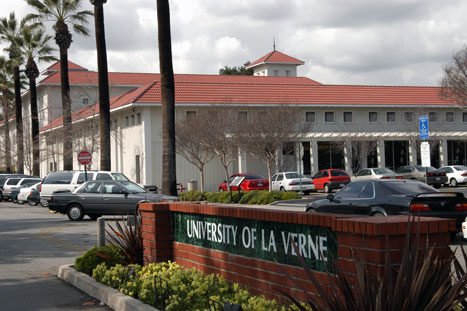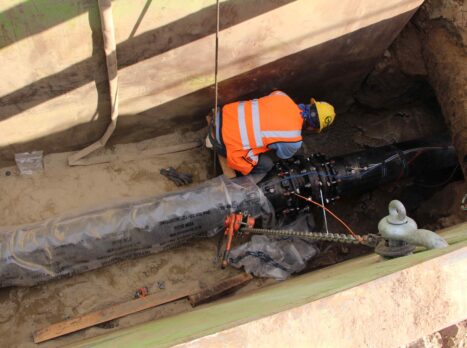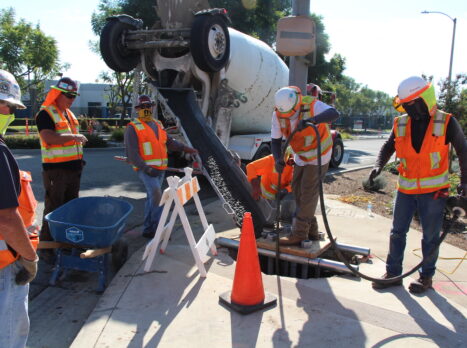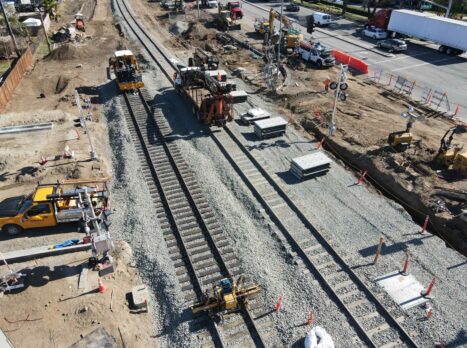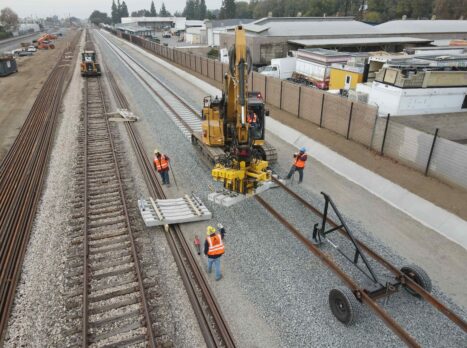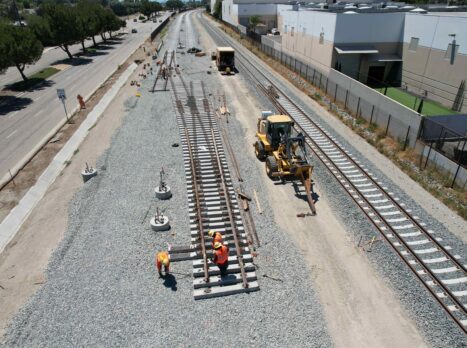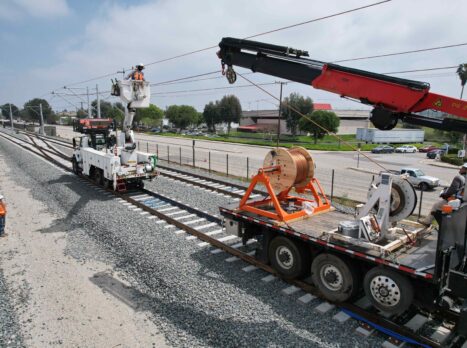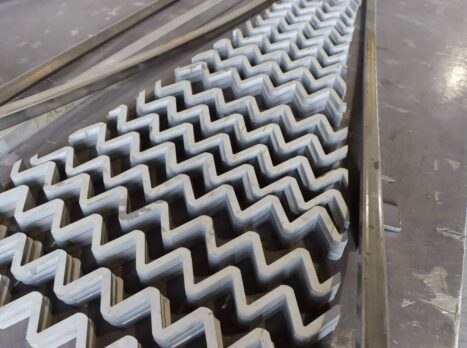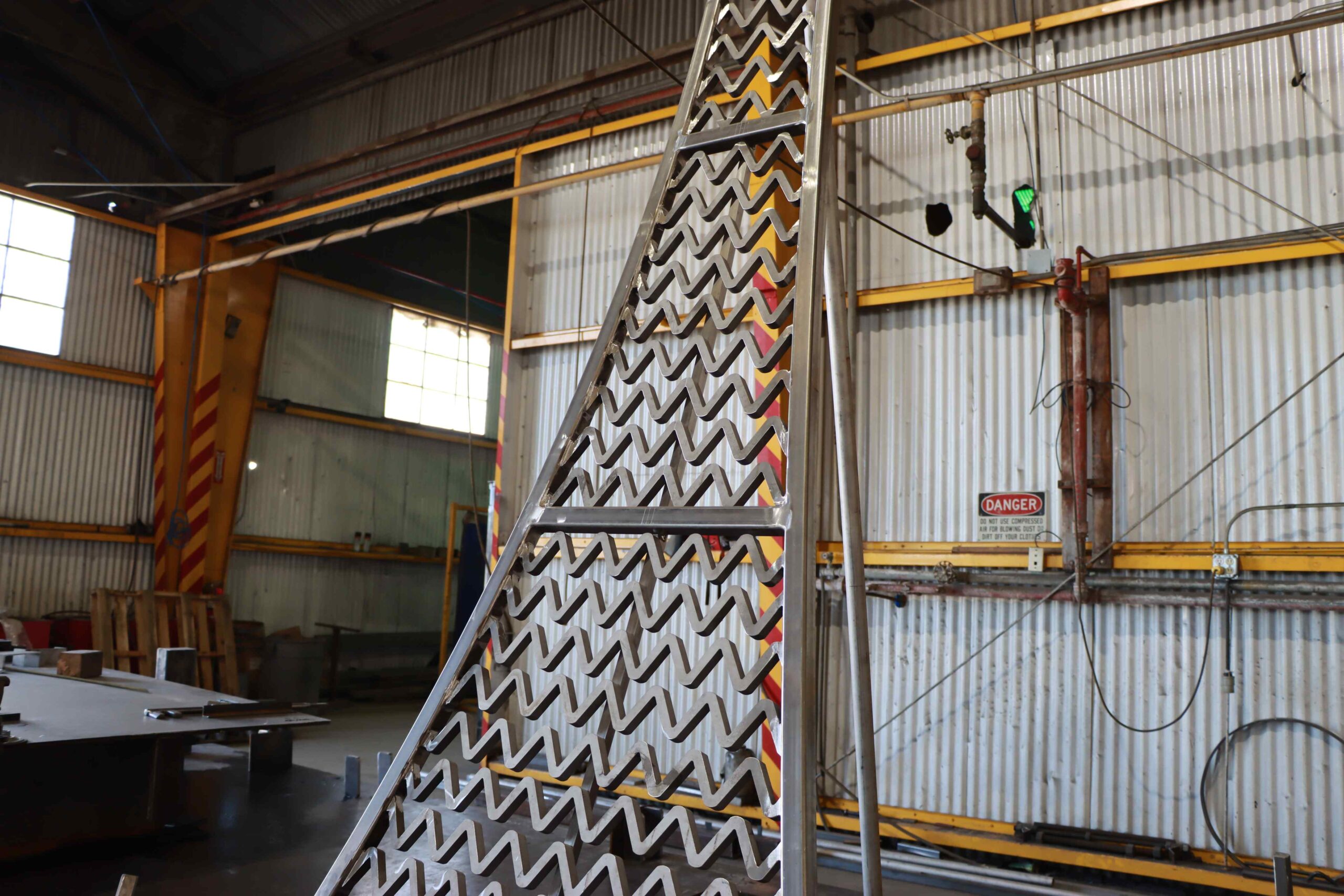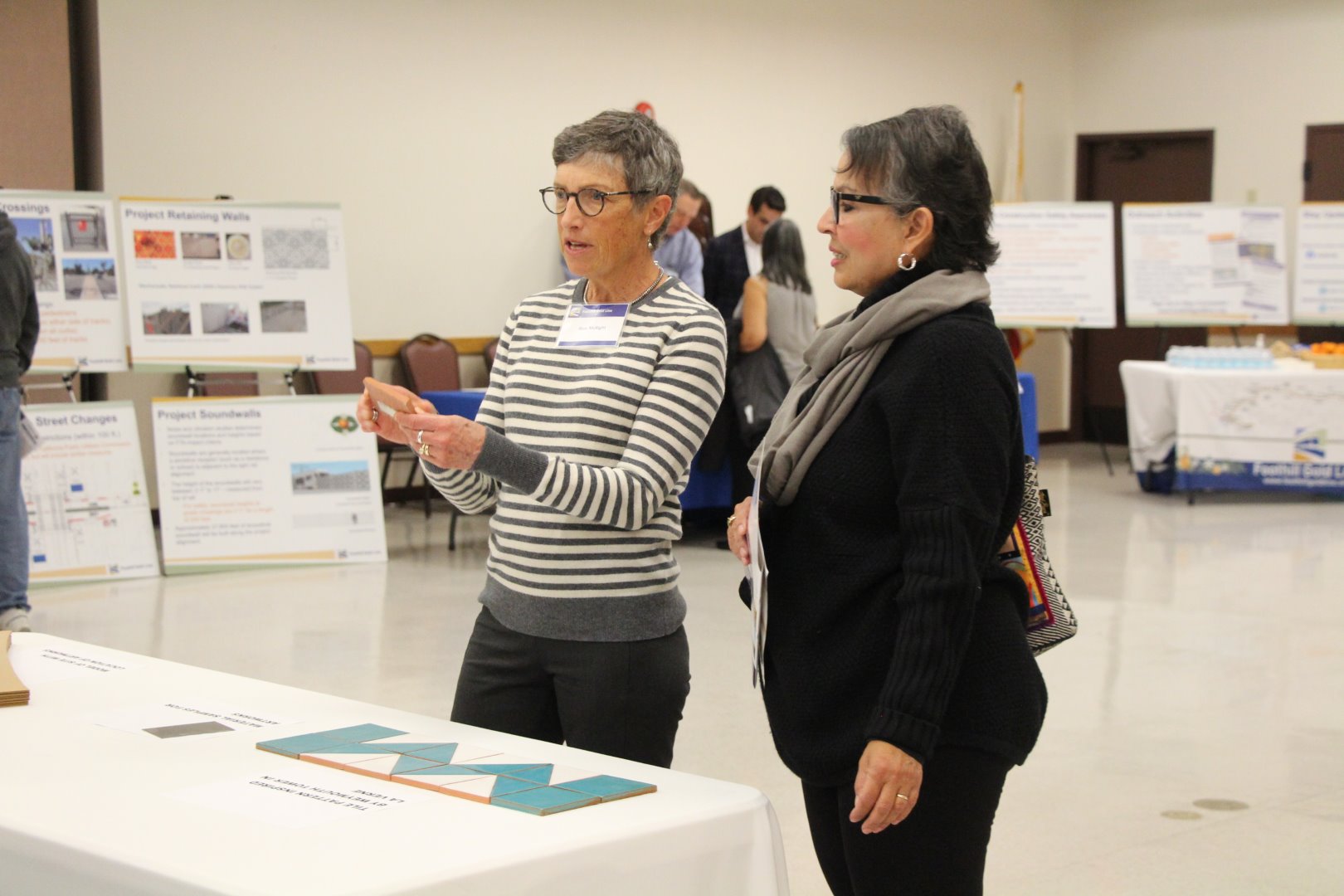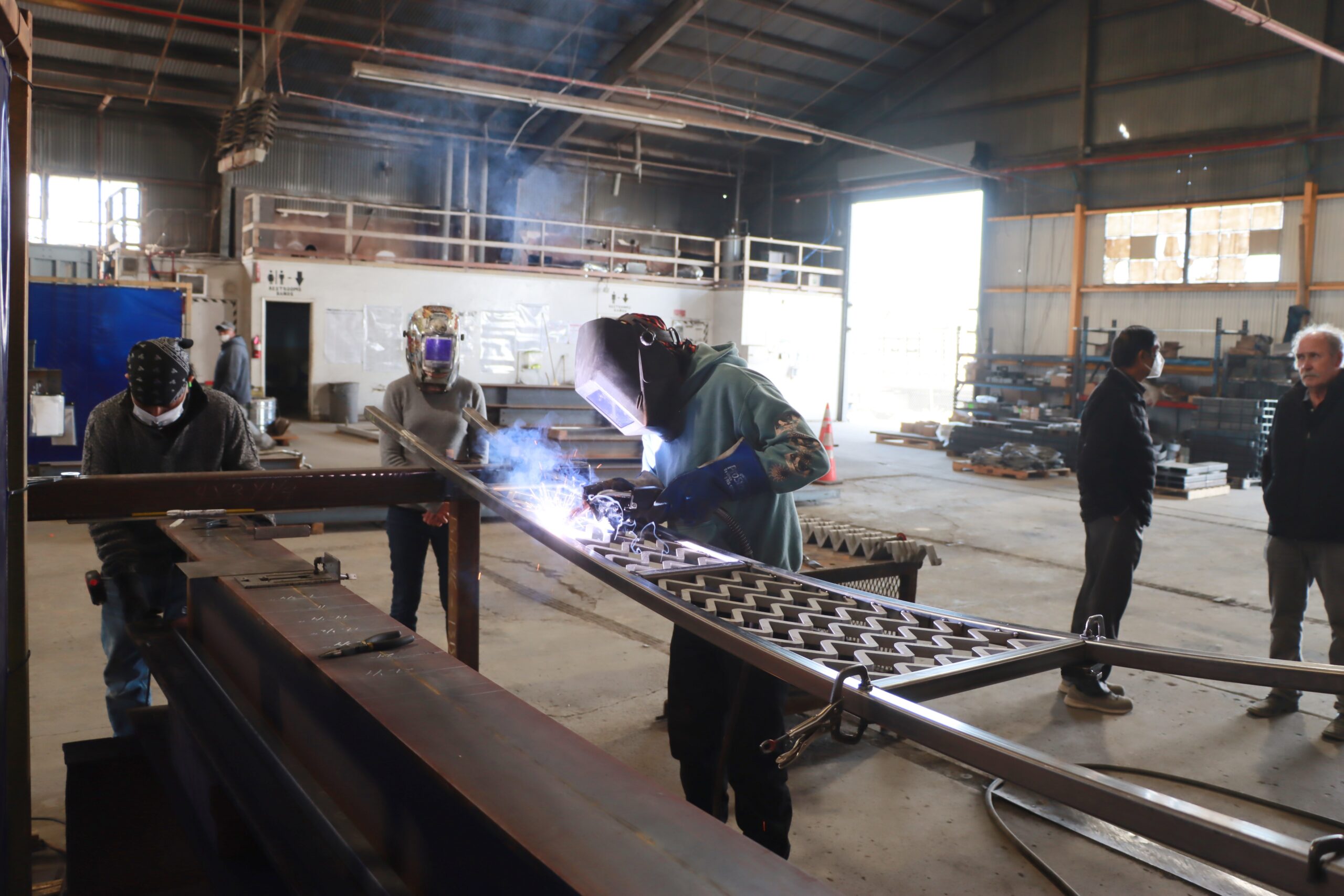renderings site plan photos
La Verne Station
The La Verne Station and associated 299-space parking facility (with charging stations for EVs, bicycle parking, and bus and drop-off areas) is located north of Arrow Highway and east of E Street, between the University of La Verne and the Pomona Fairplex. The center platform station has light rail tracks on either side (one for westbound and one for eastbound trains). Entrance to the station will be from both E Street and White Avenue, as well as from the parking facility. The single freight track that was located in the center of the rail corridor was relocated to the northern half to make room for the light rail tracks on the south side of the corridor. While they will share the rail corridor, light rail trains and freight trains do not share tracks.
During the remaining construction, the community can expect temporary impacts (such as short-term lane closures, noise mostly from construction vehicles, and other construction-related issues). Permanent changes are occurring due to the project, including safety enhancements at all street crossings (raised medians, red curbing and turn restrictions within 100 feet of the rail corridor at all street crossings), relocation of the freight track to the northern half of the rail corridor, new fencing and walls along the entire rail corridor, and new overhead wires to power the more than 200 light rail trains anticipated to run daily. The Metro A Line tracks will cross White Avenue at street level, and White Avenue will be restriped to add a second northbound lane from the railroad tracks to 6th Street. The freight track will remain at street level.
Once completed, a trip from La Verne to Pasadena will take approximately 31 minutes and further to downtown Los Angeles will take approximately 60 minutes.
For more information on the station, including the public art planned, click here for the latest station fact sheet.
About the Artist
Blue McRight is an accomplished local artist whose practice includes public art, sculpture, and installation. Among her many commissioned public artworks are Luminaries at the California Dept. of Health Services in Sacramento; Home Office, a site-responsive artwork for the State of Washington, and Garland, a sculptural light installation at the entrance to Crypto.com Arena in Los Angeles.
Blue attended Rhode Island School of Design and the Evergreen State College. She is the recipient of numerous awards and grants, including the City of Los Angeles Visual Arts Fellowship, a Downtown Cultural Trust Fund Grant through the L.A. County Redevelopment Agency, a Cultural Grant from the City of Los Angeles, and two Artist Grants from the Santa Fe, New Mexico Arts Council.
Based on her design concept, Blue was selected by the city La Verne’s Station Design and Art Review (SDAR) Committee, later ratified by the city council, in 2005. As the Foothill Gold Line from Glendora to Montclair continues to move from planning to reality, Blue has taken her preliminary design concept and work with the SDAR Committee and La Verne community, and advanced the design to be incorporated into the project’s construction.
Station Art Plan
Blue plans to create three station landmarks, symbolizing the history and architecture of La Verne and the community’s connection to water. The artworks will become engaging landmarks visible from the train station and surrounding streets. A central theme in her art plan is the shared history of citrus and water. The steps of an old orchard ladder, both literally and metaphorically, will create a repeating zig-zag pattern – an ancient symbol of water. This pattern appears in the ceramic tile ornamentation of the Metropolitan Water District’s Weymouth Tower, a landmark in the City of La Verne. The zig-zag shape was also prominently featured as the roofline of the now-demolished La Verne Orange and Lemon Grower’s Association building. A prominent example of shared infrastructure in the La Verne area is Arrow Highway. This important connector will be symbolized in the artwork by arrow-shaped, colored concrete bases for each sculpture. Each ‘arrow’ will point to one of three vital community partners (Downtown La Verne – symbolizing the city; the University of La Verne; and the Pomona Fairplex); thus each sculpture will be oriented in a different direction.
For more information on the artist and artwork, click here for the latest station fact sheet.
Future Plans
During 2006-7, the Construction Authority worked with the City of La Verne (along with all other Foothill Gold Line cities from Pasadena to Montclair) to explore their visions for integrating transit oriented developments (TOD) near the future stations. The City of La Verne had invested significant time and money to update the General Plan, collaborate with major stakeholders to finalize the University of La Verne Master Plan and participate with the Construction Authority during the 2006-7 transit-oriented development study. The Construction Authority and city began a new dialogue through another TOD study in 2010, which revisited the earlier concepts following the economic downturn. In 2016, the Construction Authority measured the progress of TOD implementation since the first segment of the line opened for passenger service in 2003, including reviewing the potential TOD that could take place near the stations looking forward. Click here to learn more about the TOD Studies.
First/Last Mile Plans
The first/last mile plan for the future La Verne station is overseen by Metro. Metro coordinated with the Construction Authority and City of La Verne to create a first/last mile plan for the La Verne station area. The plan was adopted by the Metro Board of Directors on June 27, 2019.
To learn more about the first/last mile plan for the future La Verne station, click here to visit Metro’s first/last mile plan website. NOTE: If you click on the link, you will be directed away from this website.
